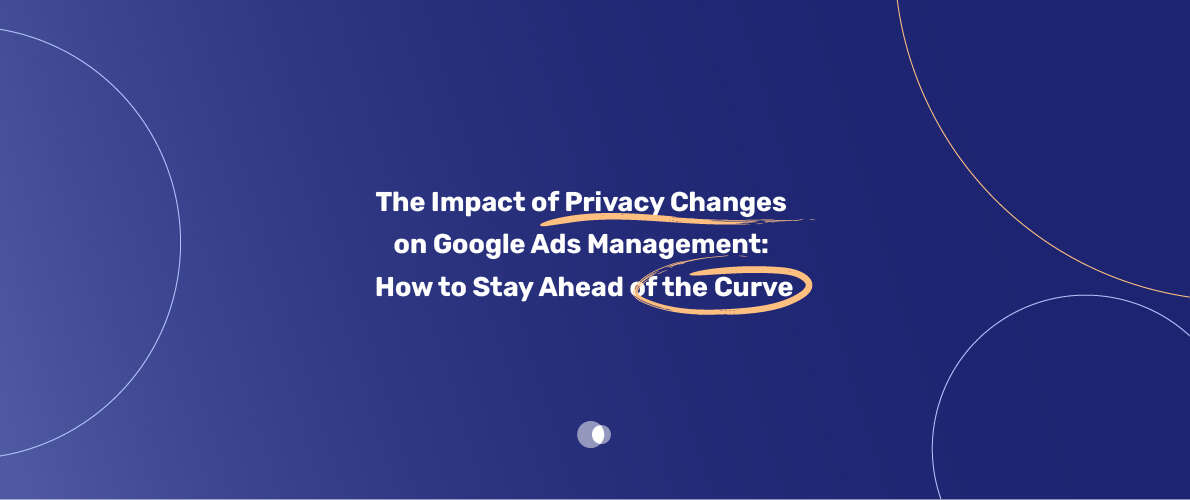Privacy Changes on Google Ads Management are reshaping how advertisers approach audience targeting and data usage. A trusted Google Ads agency can help businesses adapt by implementing privacy-first strategies, using first-party data, and ensuring compliance with evolving regulations—all while keeping campaigns effective.
Table of Contents
Changes in privacy are reshaping how we use Google Ads. It’s vital to stay on top of these changes to do well. By keeping up with privacy updates, advertisers can stay ahead in digital ads.

Exploring Google Ads and privacy changes shows the importance of staying informed. The digital ad world is always changing. Advertisers must keep up to use Google Ads well and follow new privacy rules.
Introduction to Privacy Changes
Privacy changes are making Google Ads management harder. But, by understanding these changes, advertisers can do well. With the right strategy, Google Ads can help reach audiences and succeed in campaigns.
Key Takeaways
- Privacy changes are impacting Google Ads management and digital advertising as a whole
- Understanding the latest developments in privacy changes is essential for campaign success
- Google Ads requires adaptability and strategic planning to navigate privacy changes
- Staying informed about privacy changes can help advertisers maintain a competitive edge
- Effective Google Ads management depends on compliance with the latest privacy regulations
- Adapting to privacy changes can help advertisers achieve their goals in digital advertising
Understanding the New Privacy Landscape in Digital Advertising
The digital advertising world is changing fast. This is because of new privacy regulations and a big push for user privacy protection. Online marketing is key for businesses, so it’s important to get the new privacy rules.
The General Data Protection Regulation (GDPR) and the California Consumer Privacy Act (CCPA) are big changes. They set new rules for how data is protected. These rules mean online marketing must be clear, get consent, and keep data safe.
Key Privacy Regulations Affecting Digital Marketing
- General Data Protection Regulation (GDPR)
- California Consumer Privacy Act (CCPA)
- Other regional privacy laws and regulations
The digital ad world is adjusting to these new rules. It’s key to focus on user privacy protection and follow privacy regulations. This way, businesses can keep their audience’s trust, stay legal, and avoid fines.
The Shift Towards User Privacy Protection
More people want control over their personal data. This is why online marketing needs to change. It must now focus on being open, getting consent, and keeping data safe. This makes the digital ad experience better for everyone.
The Current State of Privacy Changes on Google Ads Management
The world of Google Ads management is always changing, with privacy changes being a big part of it. Advertisers need to keep up with the latest news and how it affects Google Ads. Studies show that privacy changes have made advertisers focus more on being open and getting user consent.
Some important privacy changes affecting Google Ads management include:
- Updates to data collection and processing policies
- Changes to cookie tracking and storage
- Enhanced user controls for ad personalization
It’s vital for advertisers to understand the current state of Google Ads management. This helps them deal with changes and make their campaigns better. By keeping up with privacy changes and adapting, advertisers can make users happy and reach their marketing goals.
In today’s Google Ads management world, privacy changes are pushing the industry forward. As things keep changing, advertisers must put user privacy and openness first. They should also use new tools and technologies to improve their Google Ads strategies.
| Privacy Change | Impact on Google Ads Management |
| Updates to data collection and processing policies | Increased transparency and user consent |
| Changes to cookie tracking and storage | Enhanced user controls for ad personalization |
| Enhanced user controls for ad personalization | Improved user experience and targeted advertising |
How Third-Party Cookie Deprecation Affects Your Campaigns
The deprecation of third-party cookies is a big change for campaign management. Advertisers need to know how it impacts tracking, audience targeting, and remarketing strategies.
Studies show that losing third-party cookies can make it hard to track campaign success. This can hurt the effectiveness of campaign management and remarketing efforts.
Impact on Tracking and Measurement
- Loss of data: Third-party cookies give valuable insights into user behavior, key for tracking and measurement.
- Reduced accuracy: Without these cookies, advertisers might find it tough to accurately measure campaign success.
- Alternative solutions: Advertisers need to look into other options, like first-party data and remarketing, to make up for lost data.
Changes in Audience Targeting
The loss of third-party cookies also changes how advertisers target audiences. They can’t rely on third-party data anymore. Instead, they must build first-party data and use other targeting methods, like contextual targeting and remarketing.
By understanding the effects of third-party cookie deprecation, advertisers can adjust their strategies. This ensures they keep succeeding even without cookies.
| Strategy | Impact |
| First-party data | Positive |
| Contextual targeting | Positive |
| Remarketing | Neutral |
First-Party Data: Your New Best Friend
In today’s digital world, first-party data is key for good campaign management. Advertisers use data collection to learn about their audience. This helps them make ads that really speak to people.
Using first-party data has many benefits. For example:
- It makes ads more targeted and personal.
- It helps keep customers coming back and loyal.
- It makes collecting and analyzing data easier.
By focusing on first-party data, advertisers can keep their campaigns strong.

As first-party data becomes more important, advertisers need to get better at collecting and using it. This way, they can make the most of their campaign management and get real results.
Essential Updates to Your Tracking Setup
To keep up with privacy changes, updating your tracking setup is key. You need new tools that respect user privacy but still help you track campaign success. Tracking setup lets you see how users interact with your site and ads.
Google Analytics 4 is a must for this update. It offers detailed insights into user behavior. This helps you make smarter marketing choices. With Google Analytics 4, you can understand your audience better and improve your campaigns.
Implementing Google Analytics 4 and Server-Side Tagging
Google Analytics 4 needs server-side tagging too. This method tracks user actions on your server, not just in the browser. It’s more reliable because it avoids problems with ad blockers and browser settings.
Enhanced Conversions Setup
Don’t forget about enhanced conversions. It uses AI to track how users behave and convert. This setup helps you see how users interact with your site and ads. It lets you fine-tune your campaigns for better results.
- Implement Google Analytics 4 for more accurate data
- Set up server-side tagging for reliable tracking
- Use enhanced conversions for better conversion tracking
By updating your tracking setup, you meet privacy standards and track campaign success well. This lets you make informed decisions and improve your marketing efforts.
| Tool | Description |
| Google Analytics 4 | Provides accurate and comprehensive data on user behavior |
| Server-Side Tagging | Enables reliable tracking of user interactions |
| Enhanced Conversions | Uses machine learning algorithms for accurate conversion tracking |
Privacy-First Targeting Strategies
In today’s digital world, privacy-first targeting is key for campaign management. It focuses on keeping user data safe while still hitting the right audience. Advertisers use first-party data and contextual targeting to do this.
Using privacy-first targeting brings many benefits. It makes ads more transparent and improves how users feel about them. It also helps advertisers manage their campaigns better. They can target based on interests, behaviors, and demographics, all while keeping user data safe.
- Use first-party data to guide your targeting
- Use contextual targeting to find the right people
- Use strong campaign management tools to keep an eye on and improve your ads
By choosing privacy-first targeting, advertisers can make sure their ads are both effective and follow the latest privacy rules.
Adapting Your Measurement Approach
To stay ahead in the changing privacy landscape, adapting your measurement approach is key. This means finding new ways to track and analyze your campaigns. Conversion modeling is crucial here, helping you see how users interact with your ads and become customers.
Data-driven attribution is also vital. It lets you see the impact of each touchpoint in the customer journey. This way, you can make smart choices about your campaigns and improve their performance. A strong measurement approach is essential for this, helping you see how well your campaigns are doing and making choices based on data.
Some key things to think about when adapting your measurement approach include:
- Implementing a consent mode to protect user privacy and follow rules
- Using conversion modeling to better understand user behavior and improve campaigns
- Adopting a data-driven attribution method to accurately measure campaign success
By adjusting your measurement approach and using these strategies, you can ensure your campaigns are accurate and follow the rules. This will help you make smart choices and get better results in the changing privacy world.
Remember, a well-thought-out measurement approach is vital for success in digital ads. By keeping up with the latest trends and best practices, you can stay ahead and get better results for your campaigns.
| Measurement Approach | Benefits |
| Conversion Modeling | Accurate tracking and analysis of user behavior |
| Data-Driven Attribution | Informed decision-making and campaign optimization |
| Consent Mode Implementation | Ensured user privacy and compliance with regulations |
Future-Proofing Your Google Ads Campaigns
To stay ahead in digital advertising, focus on future-proofing your Google Ads campaigns. This means creating campaign structures that can handle changes in user behavior and privacy rules. This way, your campaigns will keep working well and bring in results.
Looking into alternative targeting methods is also key. Use first-party data, contextual targeting, and interest-based targeting. This helps you not depend too much on third-party cookies and makes your campaigns stronger.

It’s also vital to use privacy-compliant testing frameworks. These tools focus on keeping user privacy safe and follow the law. This makes sure your campaigns are not just good but also follow the latest privacy rules.
Key Strategies for Future-Proofing
- Build resilient campaign structures that can adapt to changes in user behavior and privacy regulations
- Explore alternative targeting methods, such as first-party data and contextual targeting
- Implement privacy-compliant testing frameworks that prioritize user privacy and adhere to regulatory requirements
By focusing on future-proofing and using these strategies, you can lead the way in digital advertising. This approach helps you succeed for the long haul.
| Strategy | Benefits |
| Resilient campaign structures | Improved adaptability and reduced risk |
| Alternative targeting methods | Increased reach and reduced reliance on third-party cookies |
| Privacy-compliant testing frameworks | Ensured compliance with regulatory requirements and improved user trust |
Tools and Resources for Privacy-Compliant Advertising
The digital ad world is always changing. It’s key to have the right tools and resources for privacy-compliant advertising. Advertisers must keep up with new privacy rules and best ways to do things. Luckily, many solutions help make this easier.
The Interactive Advertising Bureau (IAB) has guidelines for privacy-compliant advertising. The General Data Protection Regulation (GDPR) website also has great info and tools. Data management platforms (DMPs) and customer data platforms (CDPs) help manage user data safely and openly.
When picking tools and resources for privacy-compliant advertising, think about these things:
- Data security and encryption
- Transparency and consent management
- Compliance with regulatory requirements
- Scalability and flexibility
Using these tools and resources, advertisers can make sure their ads work well and are privacy-compliant. This builds trust with their audience.
Best Practices for Privacy-First Google Ads Management
The digital world is always changing. It’s key to focus on privacy-first management in Google Ads. This way, you follow the rules and keep your audience’s trust. To do this, you need to use best practices that protect user privacy while still collecting data.
Having an audit checklist is a big part of privacy-first management. It checks for weak spots and makes sure your ads meet current rules. Regular audits help you stay safe and open with your users.
Key Strategies for Success
- Develop a data governance framework to guide your advertising efforts
- Implement robust tracking and measurement systems
- Utilize privacy-first targeting strategies to reach your audience
Adopting these strategies and focusing on best practices helps you handle privacy-first management well. Always check and update your audit checklist to keep up with rules and improve your ads.
Conclusion: Embracing the Privacy-First Future of Digital Advertising
The digital ad world is changing, focusing more on user privacy. This shift might be tough for advertisers, but it’s also a chance to rethink how we do things. By embracing the privacy-first future, we can meet consumer needs and build real connections.
To move forward, we need to use first-party data and privacy-friendly tactics. We also have to keep improving how we measure our ads. If issues arise due to these changes, it’s essential to fix Google Ads account configurations to ensure campaigns stay effective and compliant.
The future of digital advertising isn’t about going back to old ways. It’s about finding new, privacy-respecting ways to connect with people. By staying ahead and being proactive, we can thrive in the privacy-first future.
FAQs
What is the impact of privacy changes on Google Ads management?
Privacy changes have made big waves in digital ads. Advertisers must now adjust their plans to meet new rules and keep their campaigns running well.
What are the key privacy regulations affecting digital marketing?
Laws like GDPR and CCPA have changed how we handle data. They push for more privacy, making it key for digital marketing.
How have third-party cookie deprecation affected Google Ads campaigns?
Losing third-party cookies has changed how we track and target. It’s now time for new ways to manage campaigns.
What are the best practices for privacy-first Google Ads management?
Use audit checklists and follow strategic planning. Also, keep an eye on your campaign’s performance in a privacy-first world.
What tools and resources are available for privacy-compliant advertising?
There are many tools out there. Look for privacy-focused ad platforms and consent management solutions.
How can I adapt my measurement approach to the changing privacy landscape?
Try conversion modeling and data-driven attribution. Also, make sure to implement consent modes correctly.
What are some privacy-first targeting strategies I can implement?
Use contextual ads and interest-based targeting. These methods help keep ads relevant while respecting user privacy.



